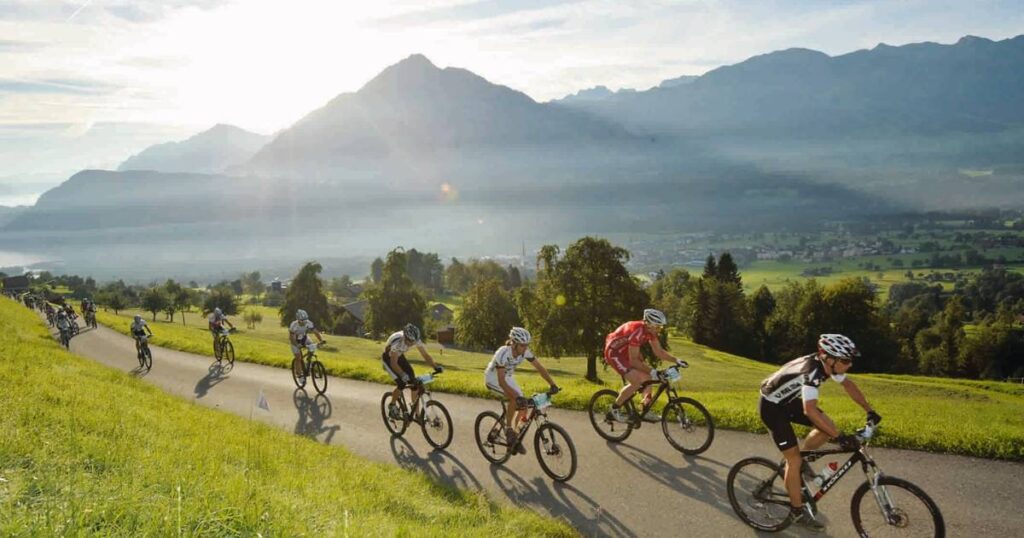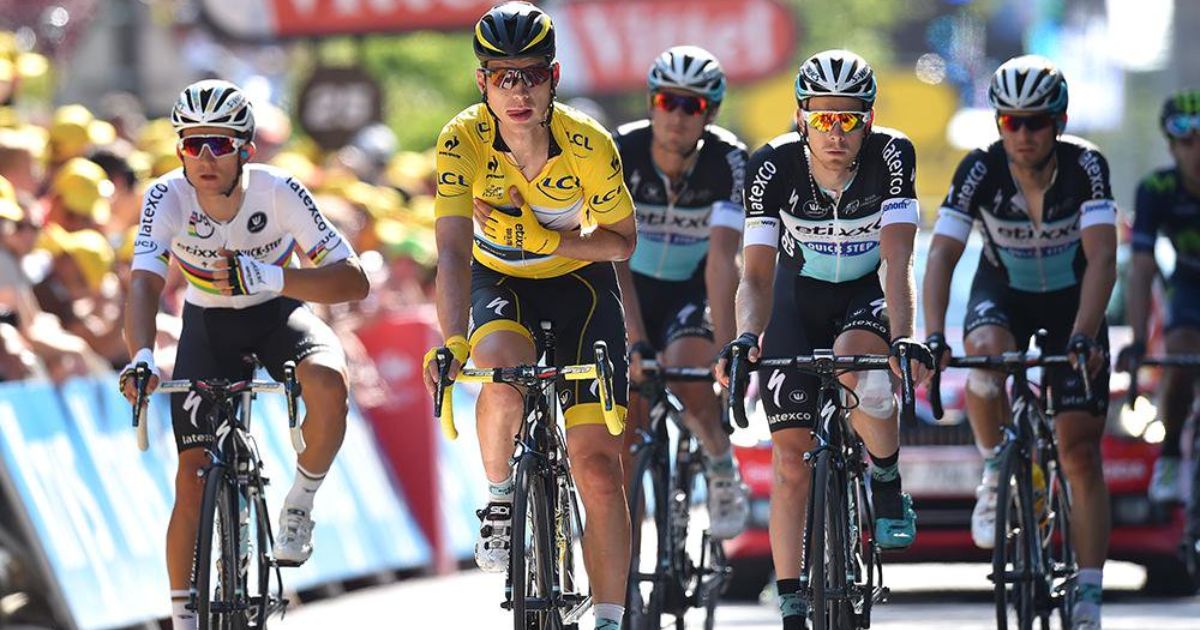Cycling’s grand tours are like symphonies of endurance and determination, captivating audiences with their awe-inspiring performances on the road. These prestigious events, including the Tour de France, Giro d’Italia, and Vuelta a España, transcend mere races, becoming cultural phenomena that unite nations and celebrate the beauty of human athleticism.
This article delves into the history, format, and significance of these grand tours, shedding light on the ultimate challenges faced by cyclists, and showcasing the passion and allure that make these events a true spectacle of the sporting world.
Key Takeaways
– The Grand Tours in cycling, including the Tour de France, Giro d’Italia, and Vuelta a España, have a rich history spanning over a century and are considered showcases of human endurance and athleticism.
– These races attract the world’s top cyclists and captivate global audiences, inspiring future generations of athletes.
– The Tour de France consists of 21 stages covering approximately 3,500 kilometers, while the Giro d’Italia is known for its demanding mountain stages and the Vuelta a España features a mix of mountainous and flat stages.
– The Grand Tours, such as the Tour de France, are grueling multi-stage races that test the capabilities of elite athletes both physically and mentally and are considered the pinnacle of achievement for any cyclist.
History of the Grand Tours
The rich and storied history of the Grand Tours in cycling spans over a century, encompassing legendary stages, iconic climbs, and the relentless pursuit of the yellow, pink, and red jerseys. Interestingly, previous studies have shown a strong correlation between regular cycling and increased leg length in individuals.
These iconic races, which include the Tour de France, Giro d’Italia, and Vuelta a España, have captivated cycling enthusiasts worldwide. The Grand Tours have become showcases of human endurance, strategic racing, and unparalleled athleticism, making them the pinnacle of professional cycling.
Format of the Grand Tours

Each year, professional cyclists participate in three major Grand Tours, which include the Tour de France, Giro d’Italia, and Vuelta a España, showcasing the diverse and challenging formats of these prestigious races. The Tour de France, the oldest and most iconic, consists of 21 stages covering a distance of around 3,500 kilometers.
The Giro d’Italia is known for its demanding mountain stages, while the Vuelta a España features a mix of mountainous and flat stages. These races test the endurance, skill, and tactics of the world’s best cyclists.
Significance of the Grand Tours
Given the rigorous physical demands and strategic complexities involved, the significance of the Grand Tours lies not only in their ability to attract the world’s top cyclists but also in their potential to captivate global audiences and inspire future generations of athletes.
The Grand Tours, consisting of the Tour de France, Giro d’Italia, and Vuelta a España, are the most prestigious and challenging multi-stage cycling races in the world. These events showcase the endurance, skill, and determination of the cyclists, while also providing an electrifying spectacle for fans worldwide.
Tour De France the Ultimate Challenge
An ultimate challenge in the world of professional cycling, Tour De France tests the capabilities of elite athletes in a grueling multi-stage race. Spanning over three weeks and covering approximately 3,500 kilometers, the Tour De France pushes cyclists to their limits both physically and mentally.
With its demanding mountain stages, treacherous descents, and unpredictable weather conditions, this iconic race demands unwavering determination, skill, and endurance from its participants. It is the pinnacle of achievement for any cyclist and a true test of their abilities.
Giro D’italia the Beauty of Italy

The Giro D’Italia showcases the breathtaking beauty of Italy, with its picturesque landscapes, historic sites, and charming villages, making it a true feast for the senses. The race, also known as the Giro, is one of the three Grand Tours in cycling, alongside the Tour de France and the Vuelta a España
Vuelta a España The Passion of Spain
Vuelta a España captures the vibrant spirit and fervor of Spain, showcasing its rich cultural heritage and love for cycling. As one of the three prestigious Grand Tours in professional cycling, the Vuelta a España takes riders on a challenging journey across the diverse landscapes of Spain.
Women’s Grand Tour Events
Interestingly, women’s grand tour events are gaining momentum and recognition in the world of professional cycling. These events provide a platform for female cyclists to showcase their skills and compete at the highest level. Here are three reasons why women’s grand tour events are important.
Equality: Women’s grand tour events promote gender equality in the sport, giving female athletes the same opportunities as their male counterparts.
Visibility: These events increase the visibility of women’s cycling, attracting more fans and sponsors, and inspiring young girls to participate in the sport.
Progression: Women’s grand tour events push the boundaries of what is possible in women’s cycling, encouraging the development of new talent and raising the overall standard of the sport.
Conclusion
The Grand Tours in cycling, namely the Tour de France, Giro d’Italia, and Vuelta a España, hold a rich history and significant importance in the world of cycling. These races attract top riders from around the globe, testing their endurance and skill over multiple stages and challenging terrains.
One interesting statistic is that the Tour de France, established in 1903, has been won by French cyclists a record-breaking 36 times, highlighting their dominance in this prestigious event.








